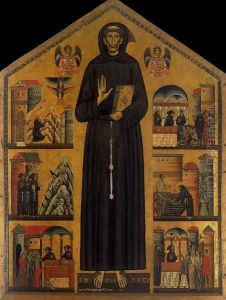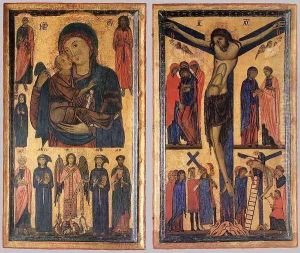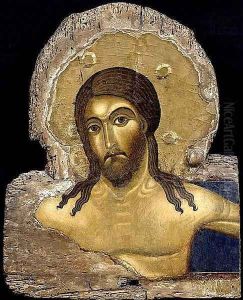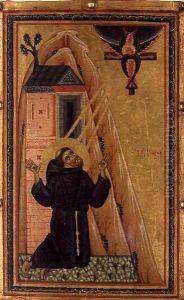Bonaventura Berlinghieri Paintings
Bonaventura Berlinghieri was an Italian painter from Lucca, Tuscany, active in the mid-13th century. He was part of the Berlinghieri family of painters, which included his father, Berlinghiero Berlinghieri, and his brothers, Barone and Marco. The Berlinghieri family was among the earliest groups of painters in Italy to adopt the Byzantine style that was prevalent during the period. The exact dates of Bonaventura's birth and death are not known, but he is believed to have been born around 1210 and to have died around 1274.
Bonaventura's most famous work is the 'Saint Francis Altarpiece', created in 1235 for the Church of San Francesco in Pescia. This work is significant as one of the earliest known portrayals of Saint Francis of Assisi after the saint's canonization in 1228. The altarpiece displays the saint in the center panel, adorned with stigmata, surrounded by scenes from his life. Bonaventura's style in this piece is characterized by its formality, use of gold leaf, and the linear treatment of drapery and figures, which was typical of the period's Byzantine-influenced art.
Not much is known about the extent of Bonaventura Berlinghieri's oeuvre, as few works can be firmly attributed to him. However, his contribution to the development of Italian painting is significant, as he was part of the transition from Byzantine to proto-Renaissance art. His work reflects the spiritual and didactic purposes of art in the 13th century, aiming to educate and inspire devotion in the viewer. Despite the lack of extensive personal details about his life, Bonaventura Berlinghieri's legacy is preserved through his influence on the style and subject matter of later medieval Italian painting.



